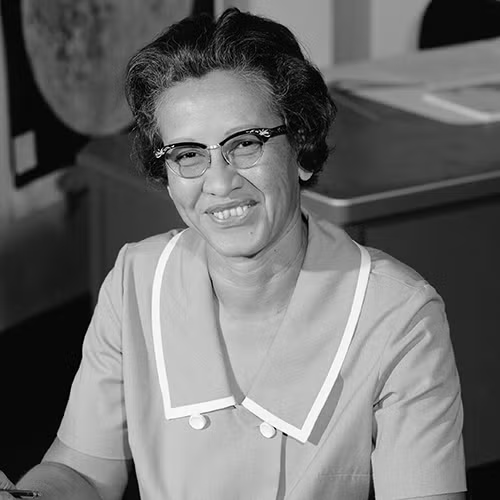
Table of Contents
Who Was Katherine Johnson?
Katherine Johnson was a pioneering mathematician whose brilliance helped shape the U.S. space program. Despite limited educational opportunities for African Americans at the time, she graduated from college at 18 and began working in aeronautics in 1952. After NASA was formed, her extraordinary calculations played a key role in sending astronauts into orbit in the early 1960s and to the moon in 1969. In 2015, Johnson was awarded the Presidential Medal of Freedom, and her story was celebrated in the 2016 book and film Hidden Figures. She passed away on February 24, 2020, at the age of 101.
Early Life and Education
Katherine Coleman was born on August 26, 1918, in White Sulphur Springs, West Virginia. A gifted child, she completed eighth grade by age 10. Despite segregation limiting educational options for African Americans, her family moved so she could attend high school in Institute, West Virginia. There, Johnson thrived and later enrolled at West Virginia State College, where she earned degrees in mathematics and French by age 18. Her mentor, Dr. William W. Schieffelin Claytor, encouraged her to pursue a career in research mathematics.
In 1939, she became one of three students to desegregate West Virginia University’s graduate school, though she did not complete her program.
Career as a “Computer”
Johnson initially worked as a teacher but joined the National Advisory Committee for Aeronautics (NACA) in 1952 as a “computer,” responsible for performing mathematical calculations for aviation and space projects. Her curiosity and willingness to ask questions quickly set her apart. After just two weeks, she transferred to Langley’s flight research division, where her mathematical skills became invaluable.
NASA and Spaceflight Contributions
When NACA became NASA in 1958, Johnson was tasked with calculating the trajectory for space missions. Her work was crucial to Alan Shepard’s 1961 mission as the first American in space and John Glenn’s 1962 orbital flight, where her manual calculations were used to confirm those of the electronic computers. Johnson also contributed to the Apollo 11 mission that landed humans on the moon in 1969 and helped ensure the safe return of Apollo 13 in 1970 after a malfunction in space. Johnson continued to play a significant role in NASA’s space programs until her retirement in 1986.
Recognition and Legacy
Johnson’s groundbreaking contributions went unrecognized for decades until Margot Lee Shetterly’s book Hidden Figures (2016) and the subsequent film highlighted the stories of Johnson and her fellow African American women at NASA. Johnson’s numerous awards include NASA’s Lunar Orbiter Spacecraft and Operations team award and the National Technical Association’s Mathematician of the Year. In 2015, she was presented with the Presidential Medal of Freedom, the highest civilian honor in the U.S.
In 2017, NASA dedicated the Katherine G. Johnson Computational Research Facility in her honor, solidifying her legacy as a trailblazer who helped shape the future of space exploration.
Personal Life and Death
Johnson was married to James Francis Goble, with whom she had three daughters. After his death in 1956, she later married James A. Johnson, a decorated military officer. Katherine Johnson passed away on February 24, 2020, at the age of 101, leaving behind a lasting legacy of intellectual brilliance and perseverance.
